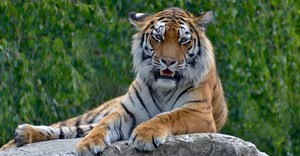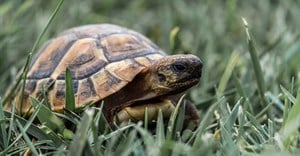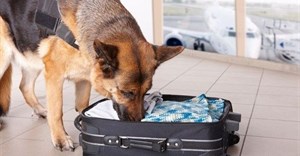Wildlife traffickers net their prey online

Experts sounded the alarm on Wednesday, 28 September, at the Conference of the Parties to the Convention on the International Trade in Endangered Species of Wild Fauna and Flora (Cites), under way in Sandton, Johannesburg.
But the bad guys aren't the only ones exploiting technology - conservationists are using nanotechnology, barcoding, and DNA and chemical-composition profiling.
The "Combating Wildlife Cybercrime" report paints a bleak picture of law enforcement officers continually being outwitted by criminals.
Interpol recently found 660 advertisements originating in nine European countries on 61 internet auction sites touting ivory valued at €1.45m.
"In November 2014 an investigation found that 33006 endangered animals and wildlife products were for sale in 9482 adverts. They were worth a minimum of $10.7m (R145.9-million)," the report said.
"The investigation looked at the trade in endangered wildlife taking place on 280 online marketplaces in 16 countries. Of the advertisements, 54% were for live animals and 46% for animal parts and products. Ivory, reptiles and birds were the items most widely offered."
Richard Thomas, spokesman for Traffic, an international organisation that tracks and counters wildlife trading, said criminals were increasingly taking advantage of the internet.
"The internet allows people to carry out transactions without a face-to-face meeting, using couriers to get products from sellers to buyers.
"In 2012 we noticed an alarming spike in coded adverts in China. At the height of the spike 60000 adverts a month were being placed to sell wildlife illegally," Thomas said.
Forensic scientists who met on the sidelines of the Cites conference are pushing for science to complement brute force in the fight against the wildlife traffickers.
"Forensic sciences can help distinguish the difference between legally and illegally traded animals, establish the source of seized animal products and map the trade routes," said Rob Ogden, programme director of the wildlife forensic network Trace.
Forensic scientists have developing databases of the characteristics of blood, saliva, hair and skin samples from animals.
"There is an urgent need for the establishment of regional forensic science hubs, equipped with databases containing important information such as DNA profiles that can be accessed easily by investigators and contribute to prosecutions.
"Often, poached wildlife is passed off as having been captive-bred. These databases will help differentiate," Ogden said.
Source: The Times
Source: I-Net Bridge

For more than two decades, I-Net Bridge has been one of South Africa’s preferred electronic providers of innovative solutions, data of the highest calibre, reliable platforms and excellent supporting systems. Our products include workstations, web applications and data feeds packaged with in-depth news and powerful analytical tools empowering clients to make meaningful decisions.
We pride ourselves on our wide variety of in-house skills, encompassing multiple platforms and applications. These skills enable us to not only function as a first class facility, but also design, implement and support all our client needs at a level that confirms I-Net Bridge a leader in its field.
Go to: http://www.inet.co.za















